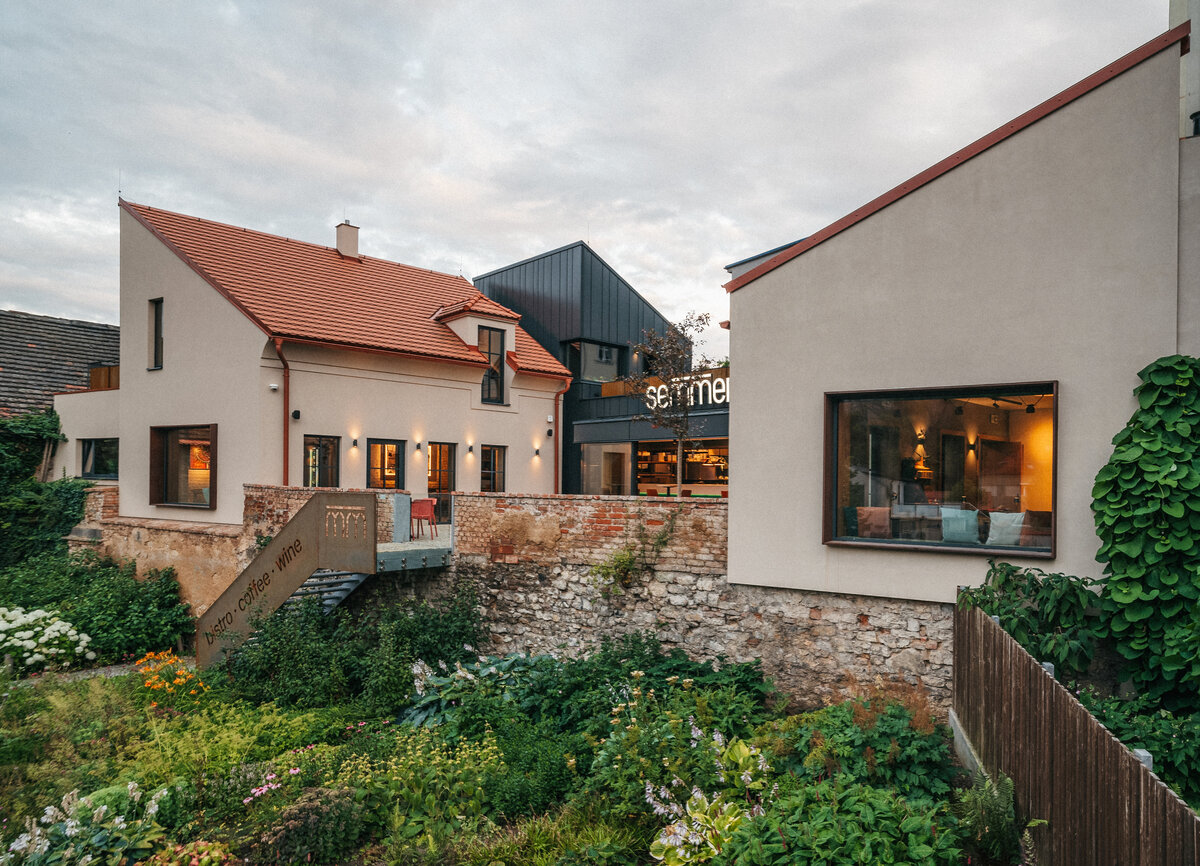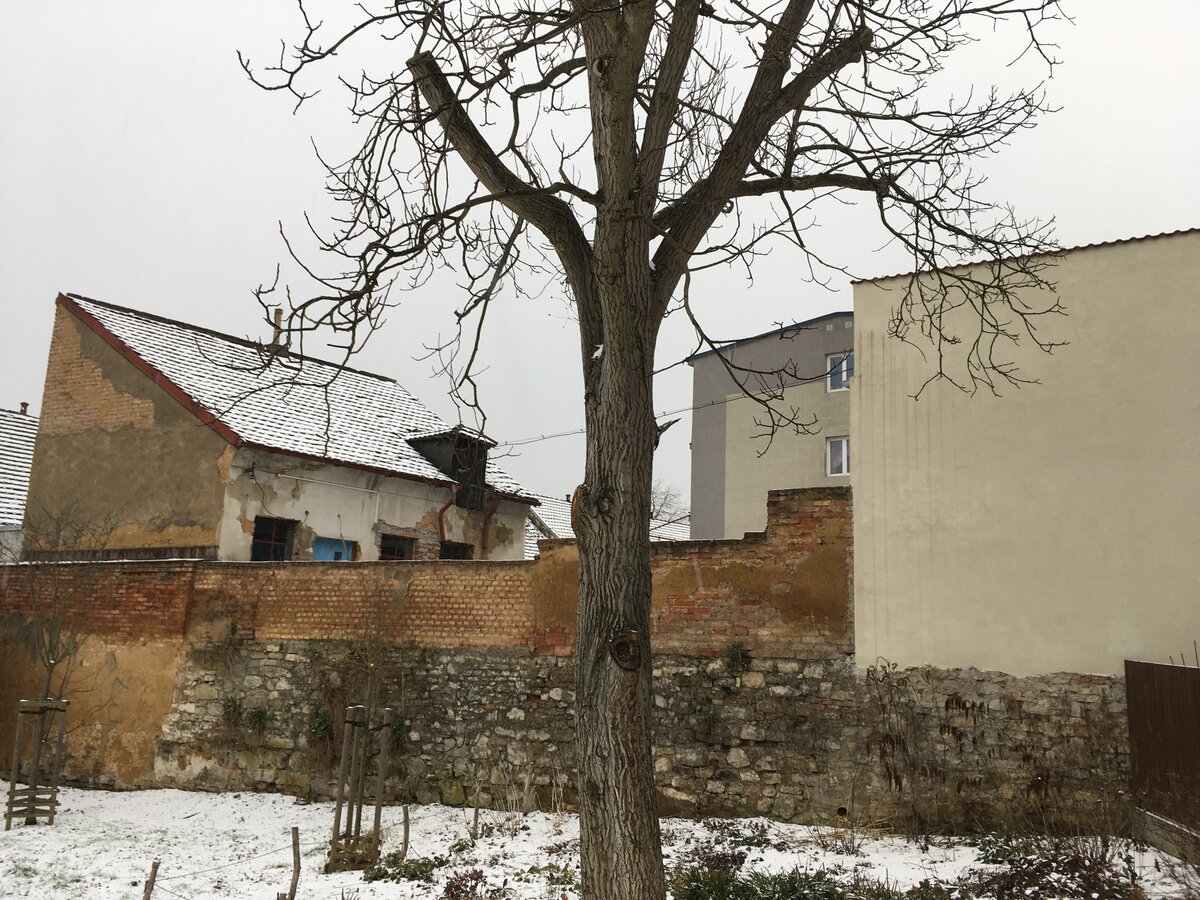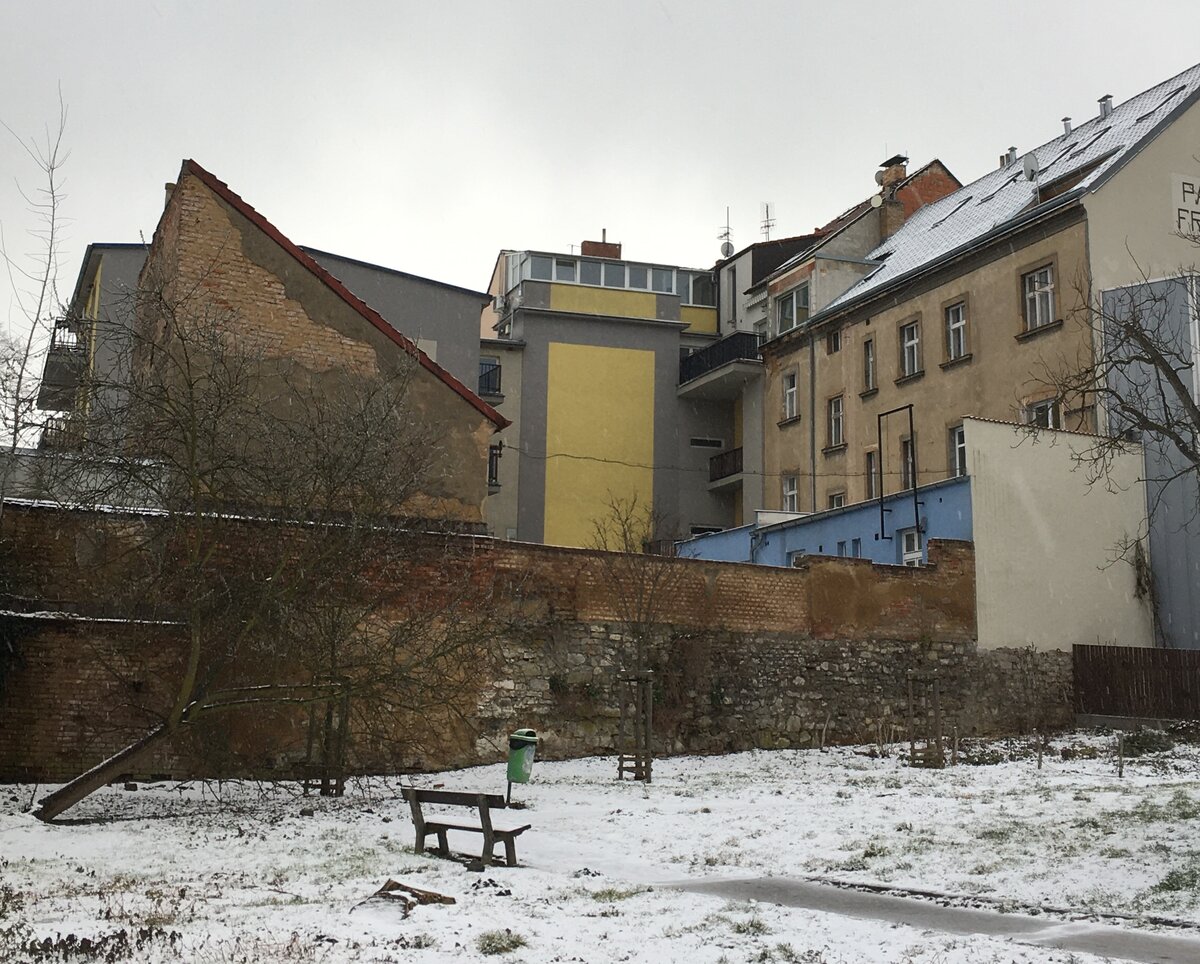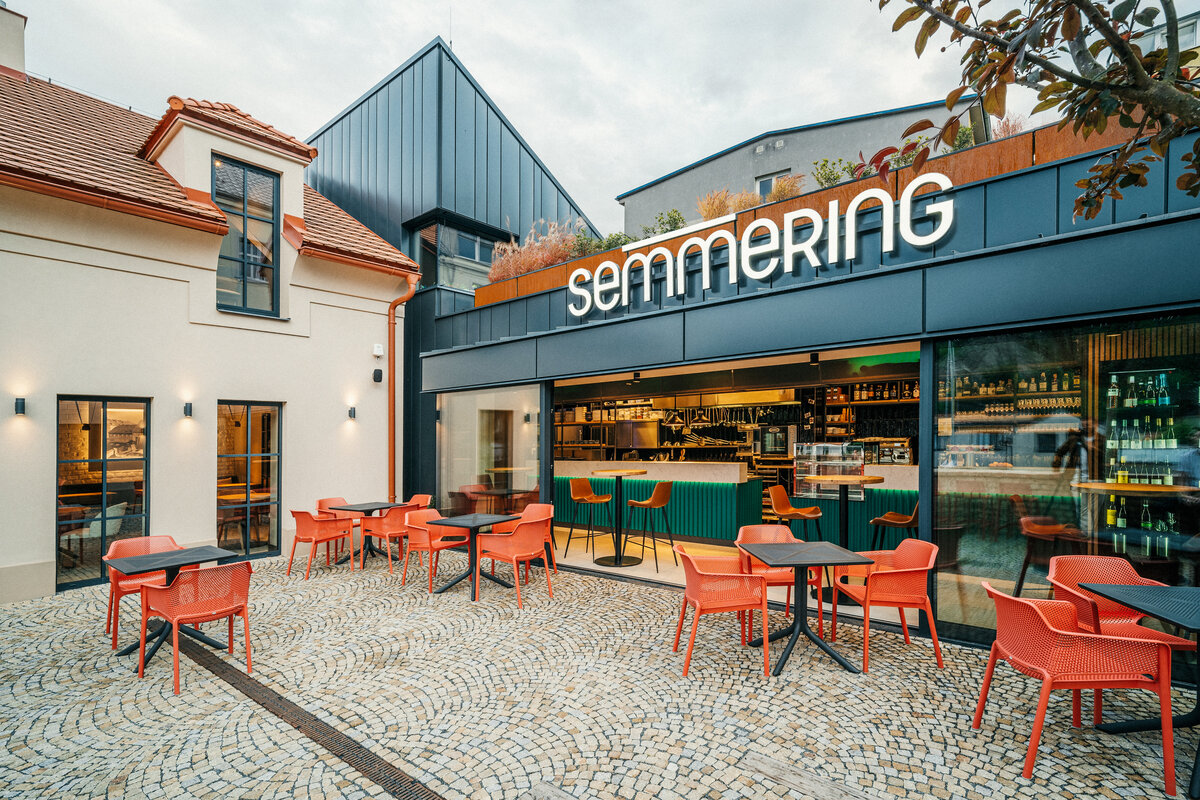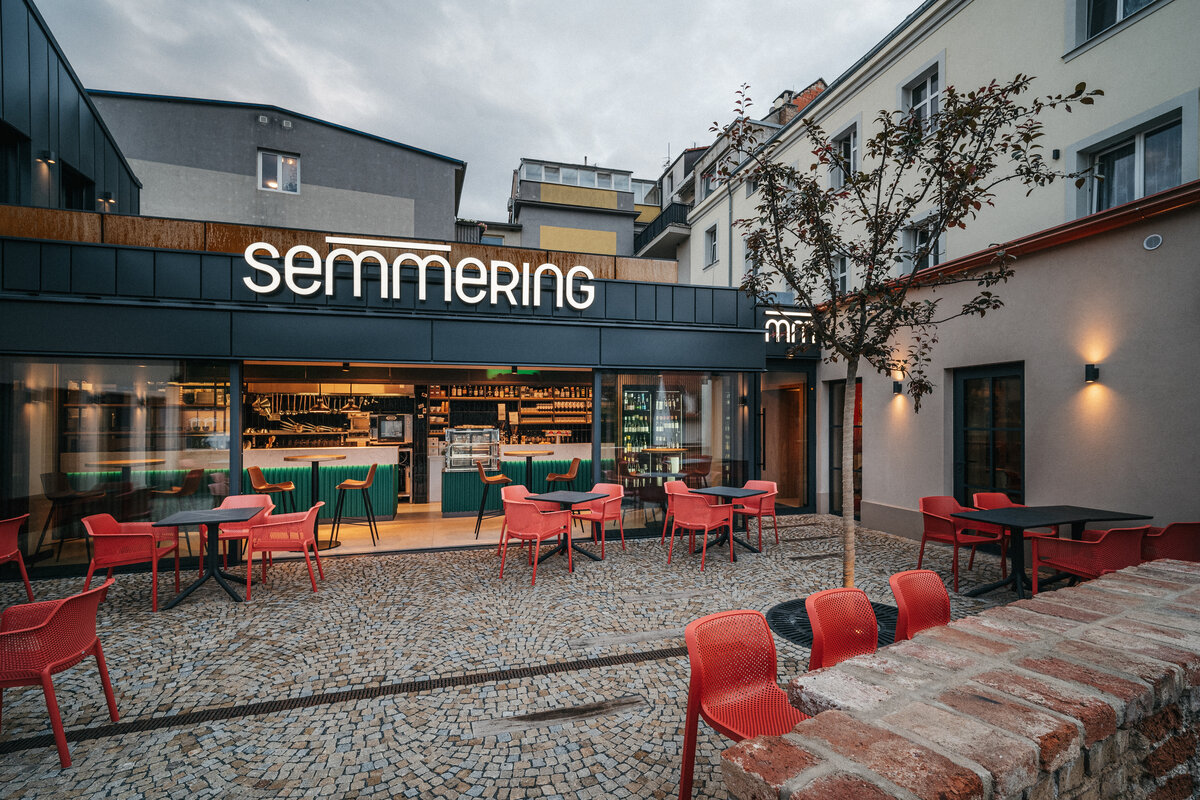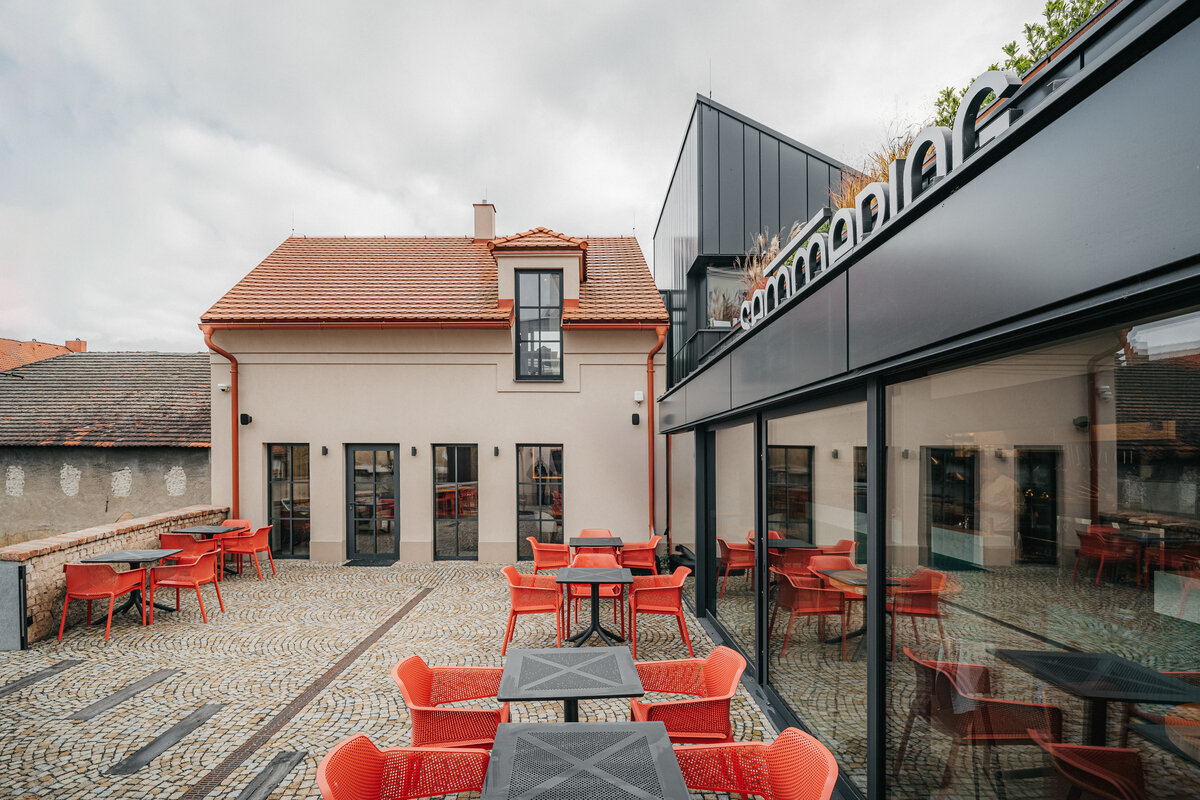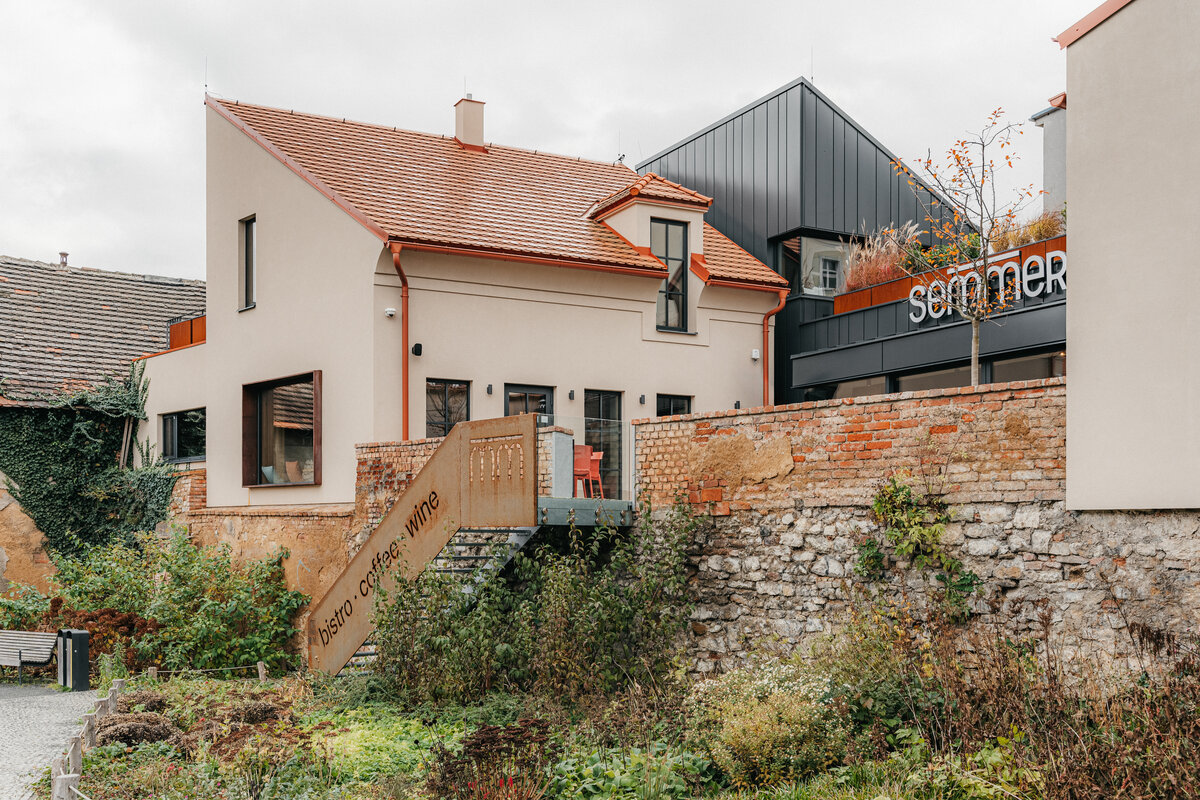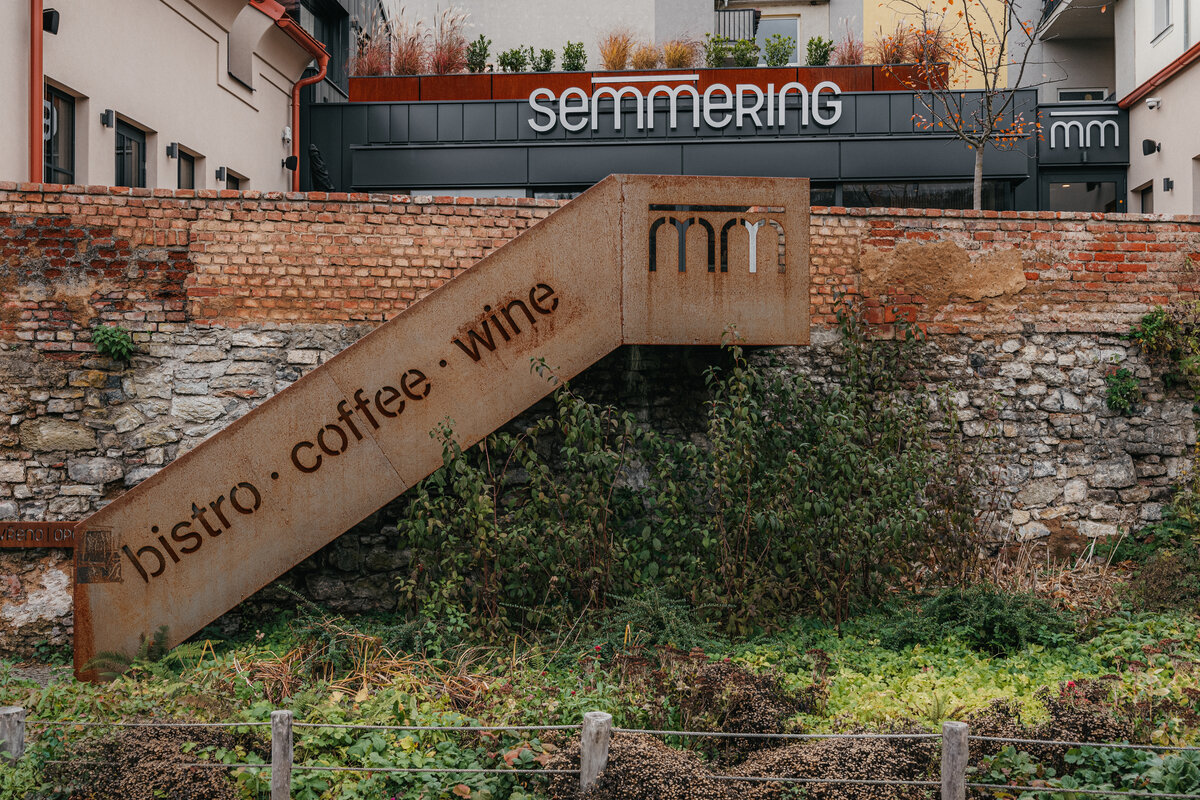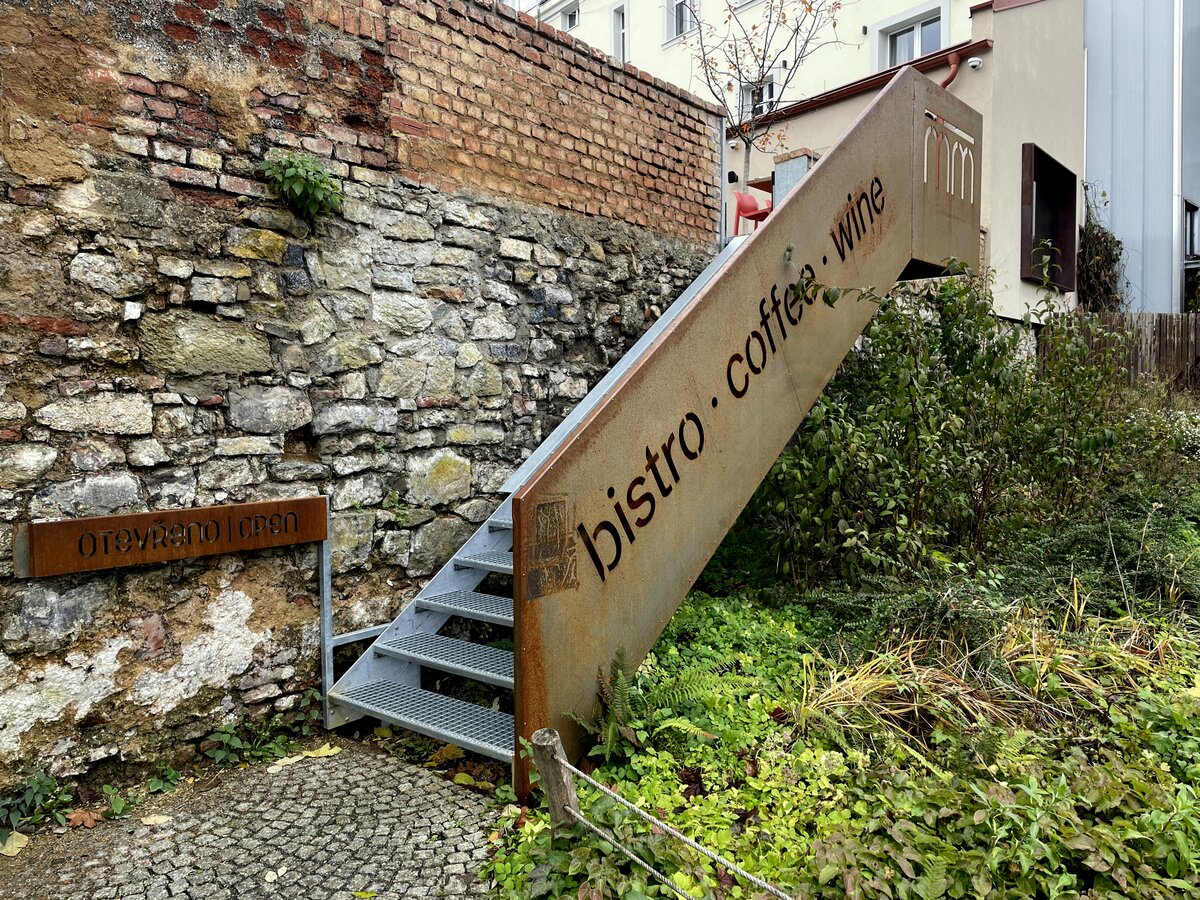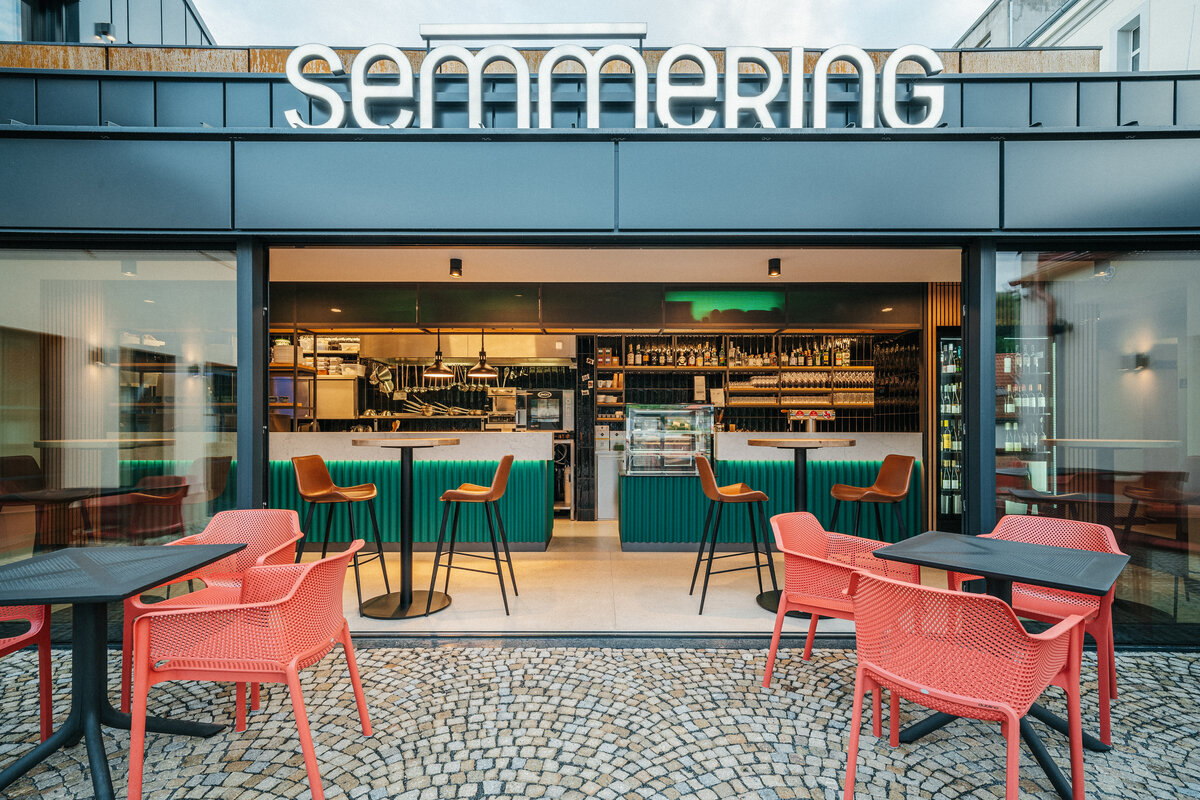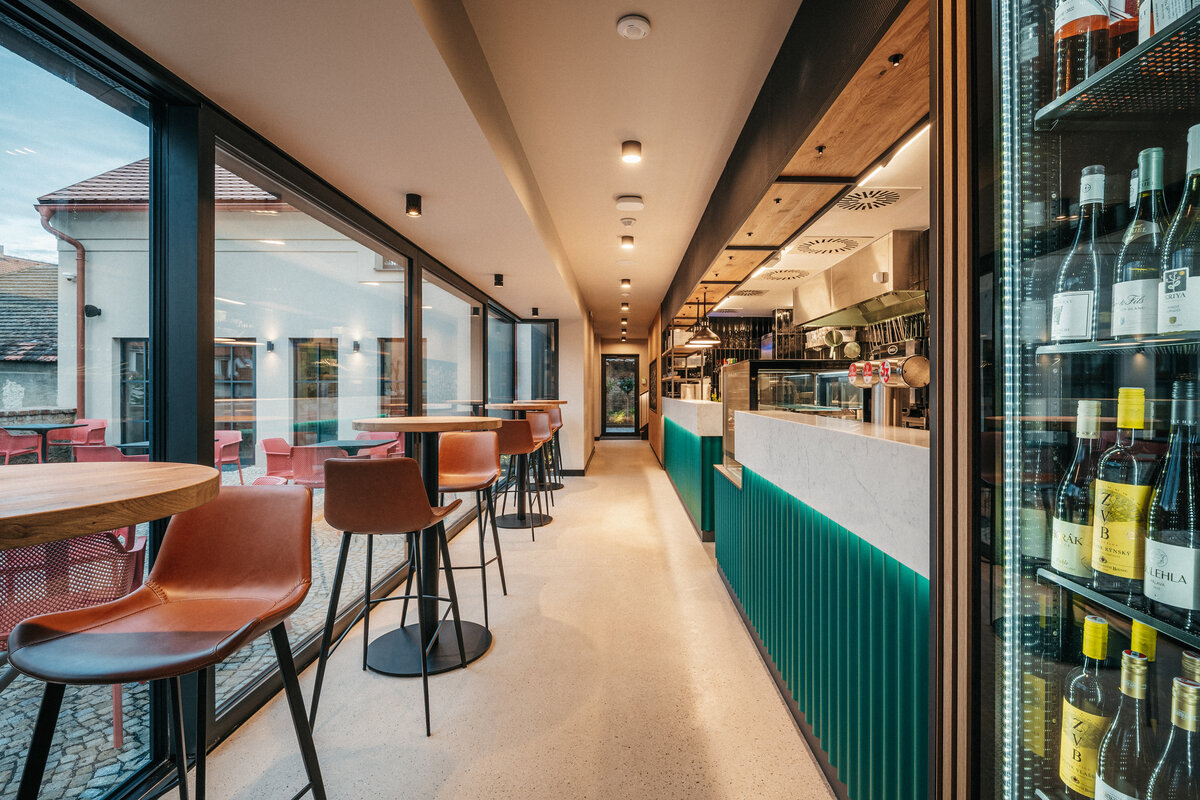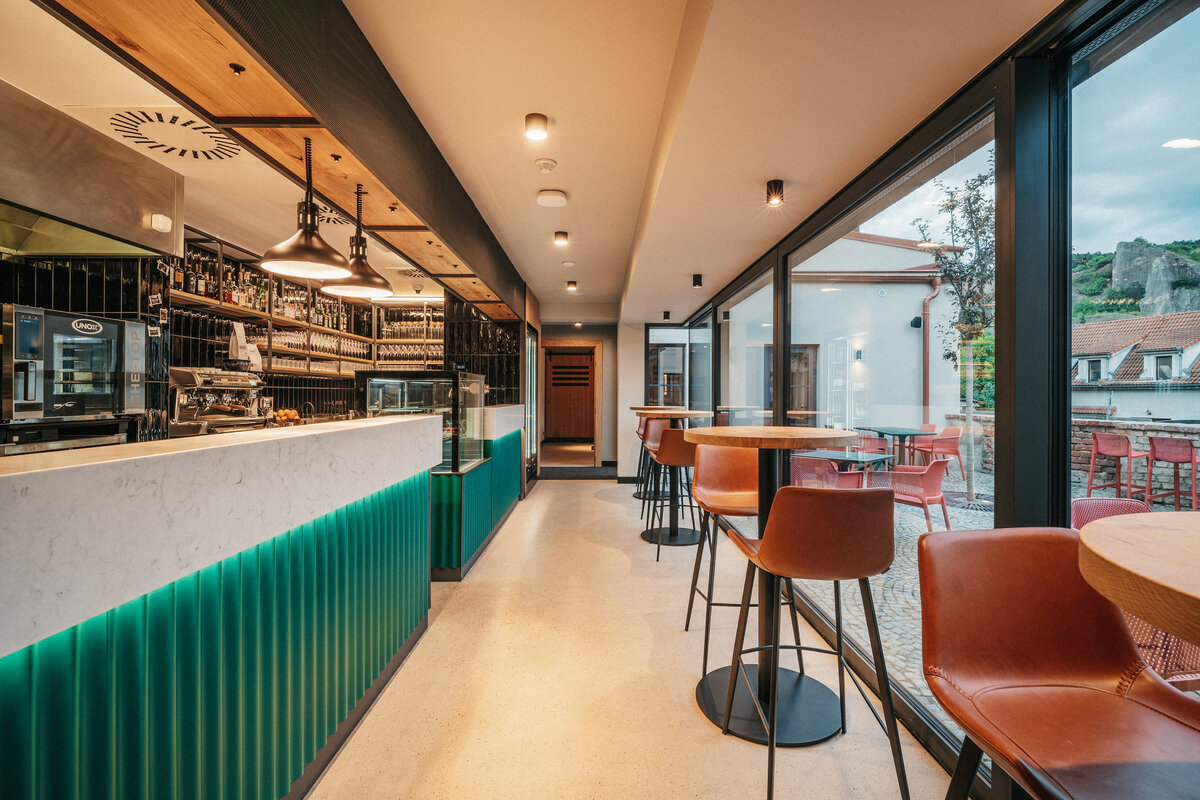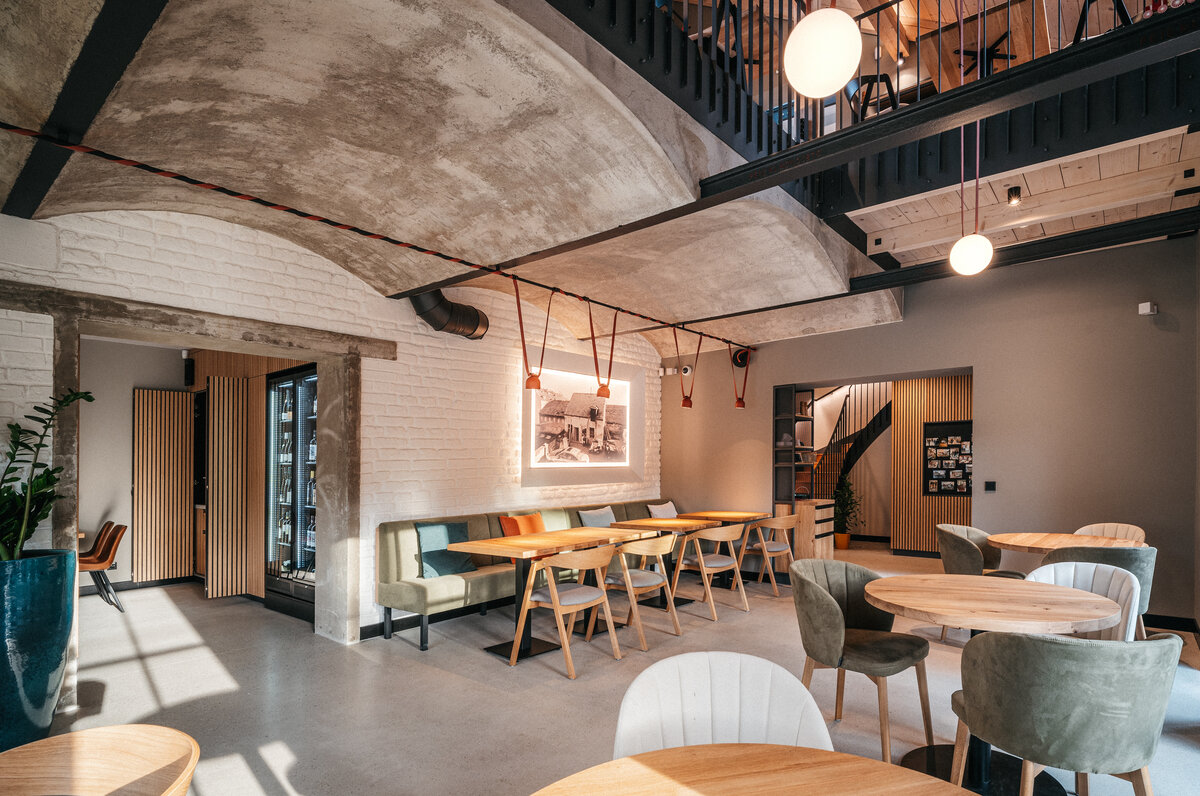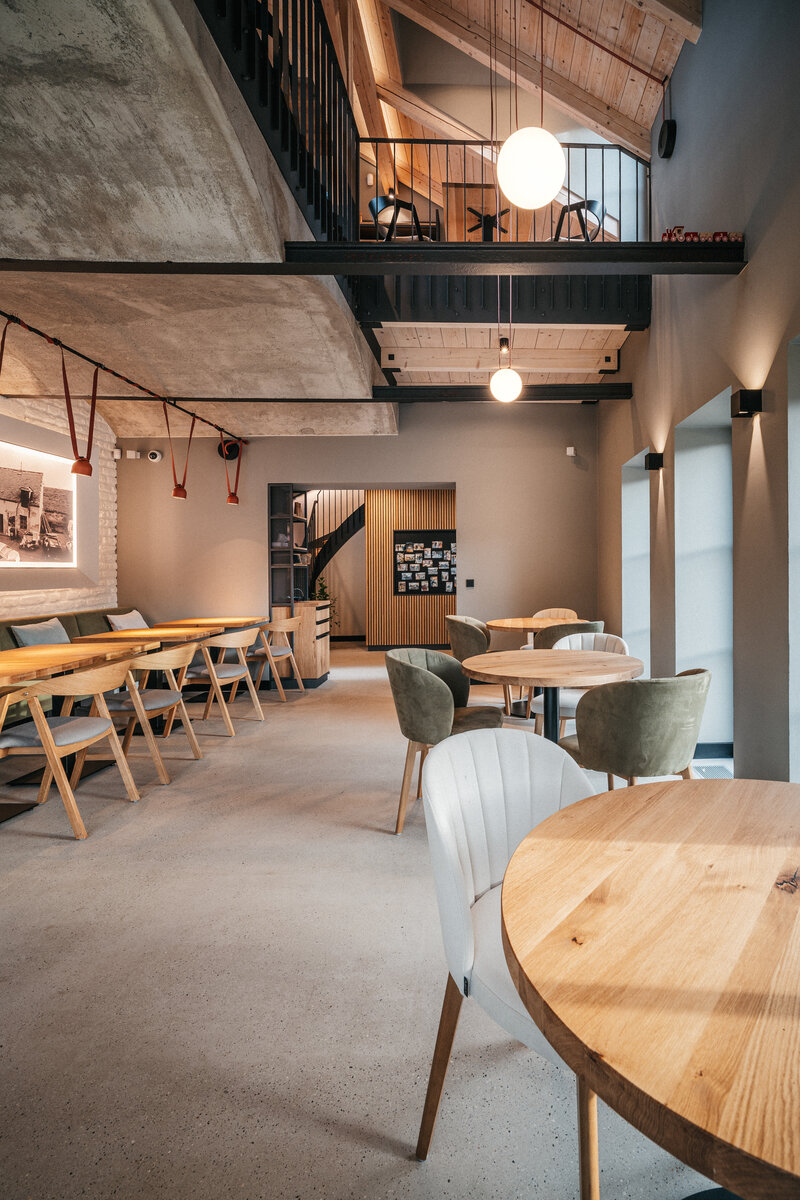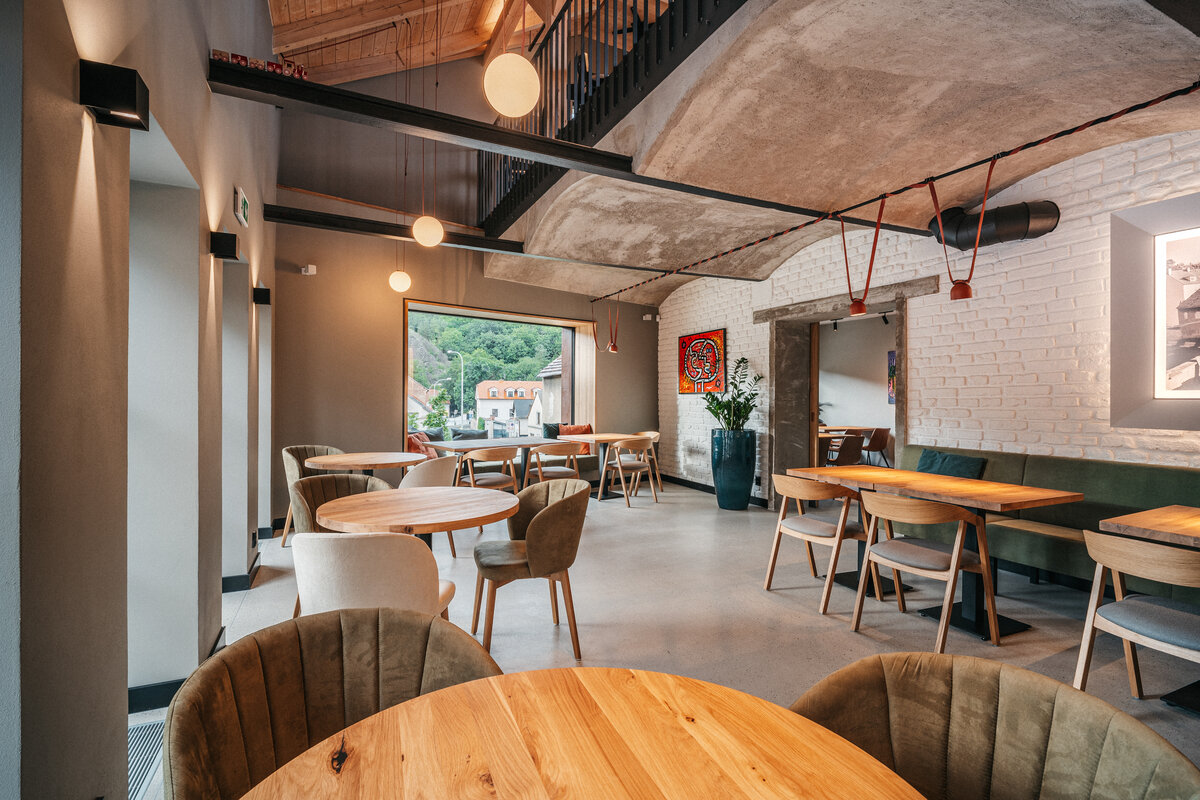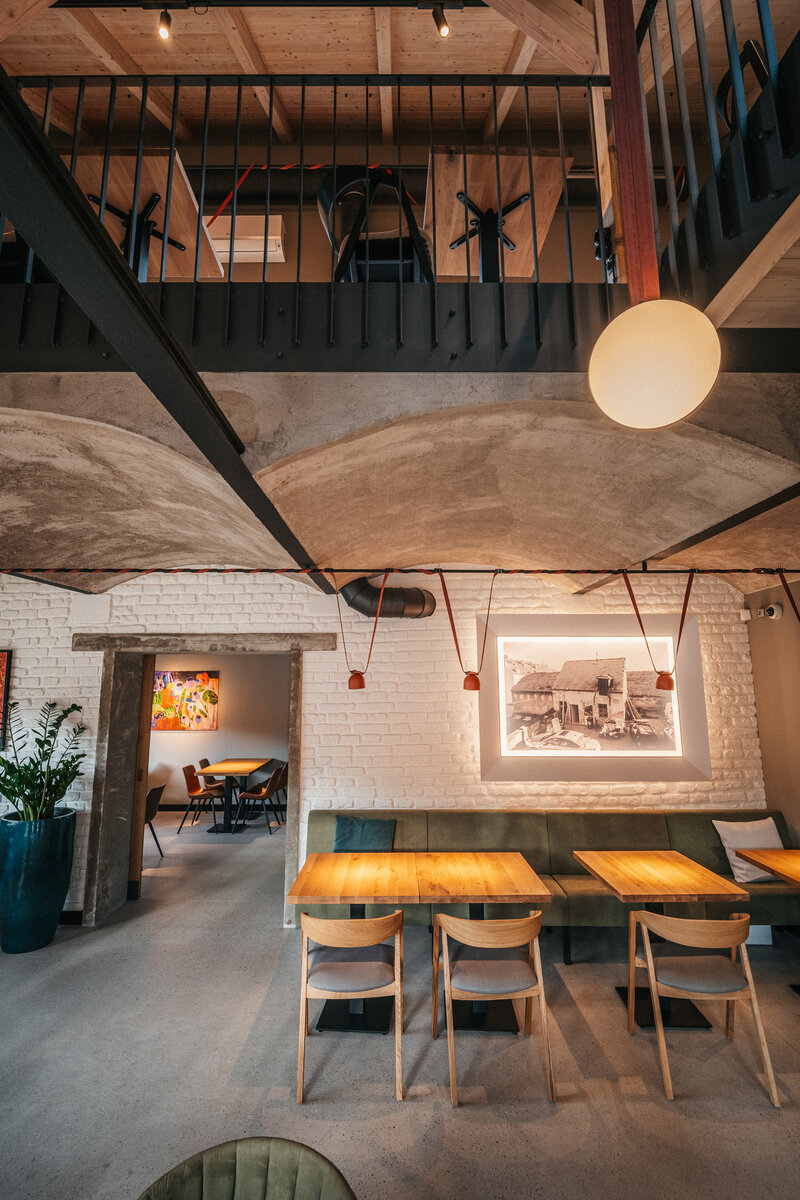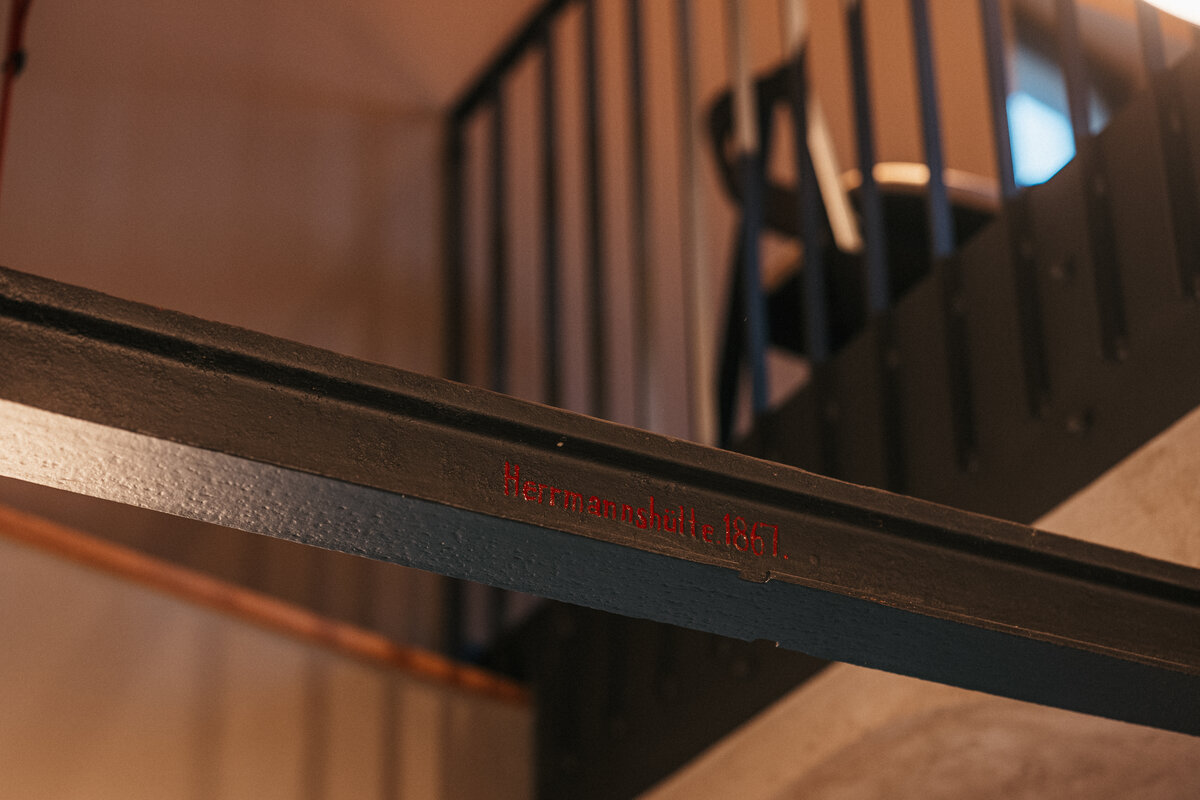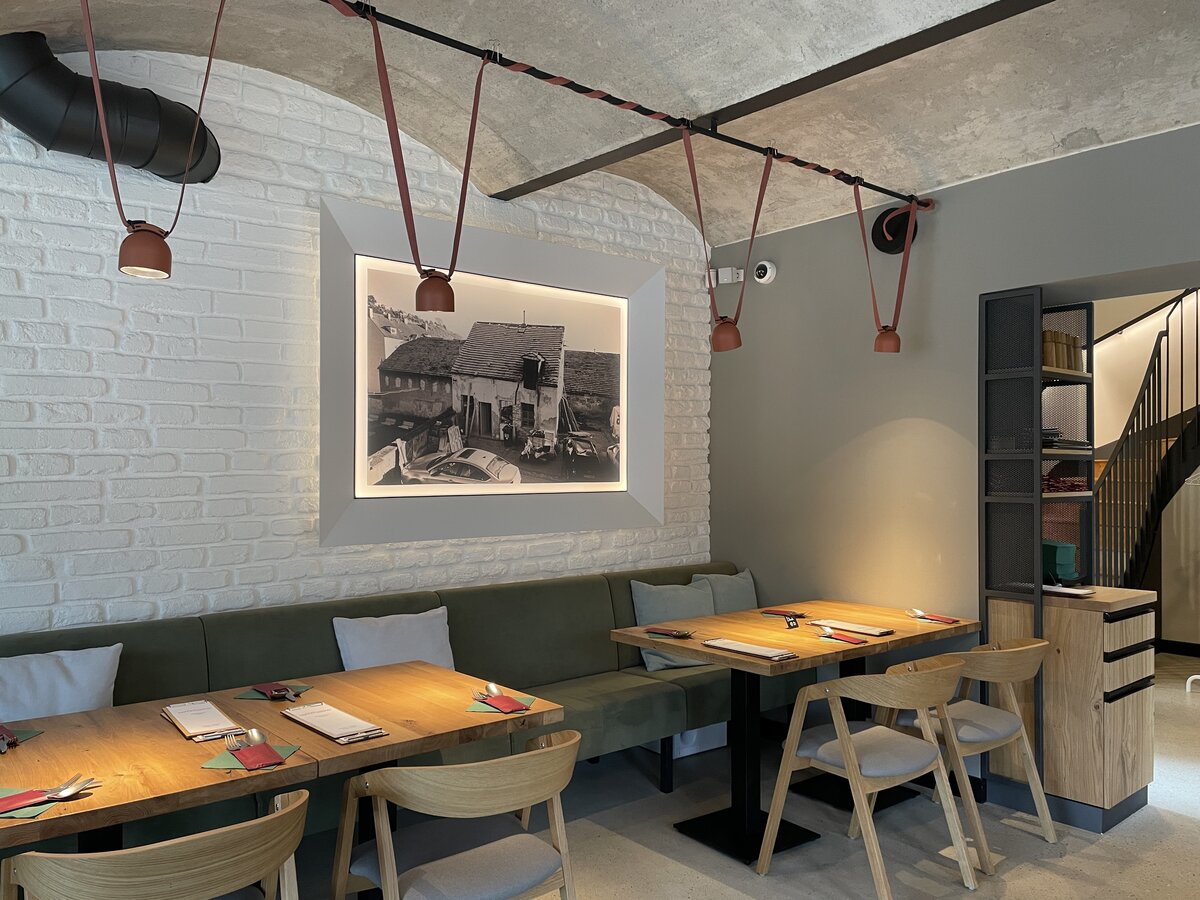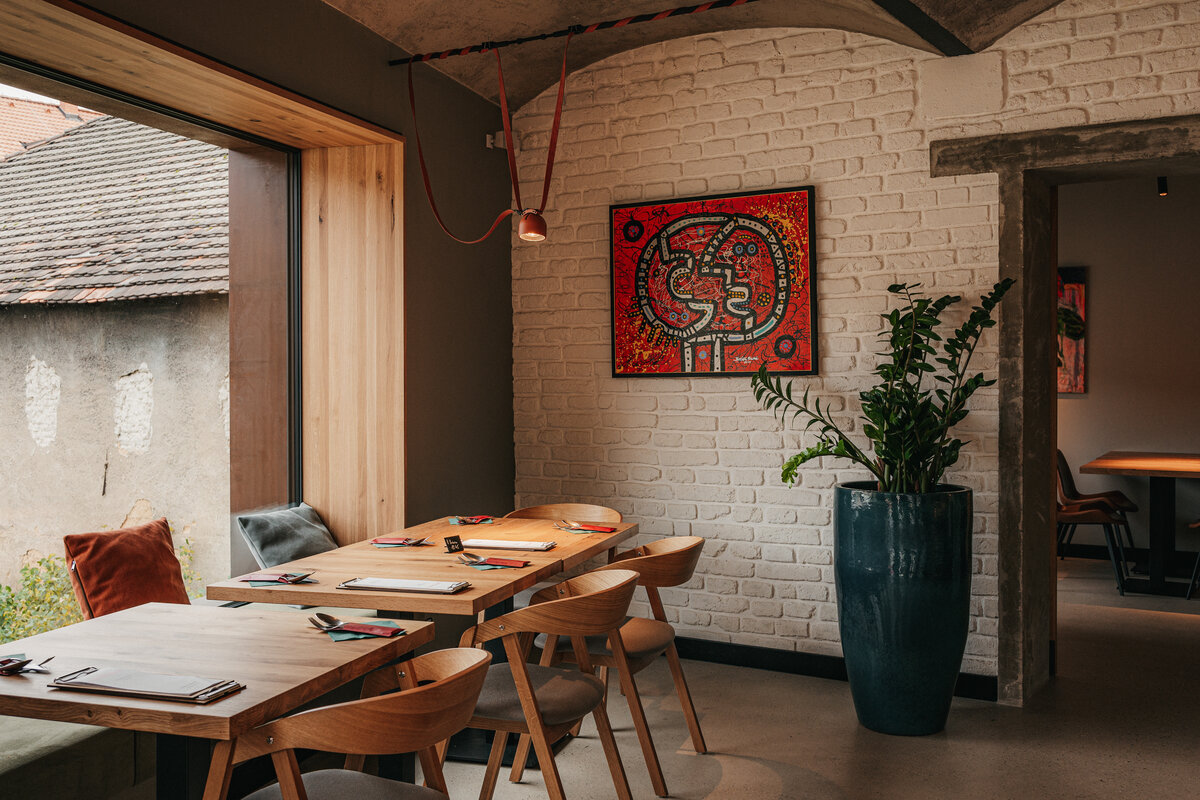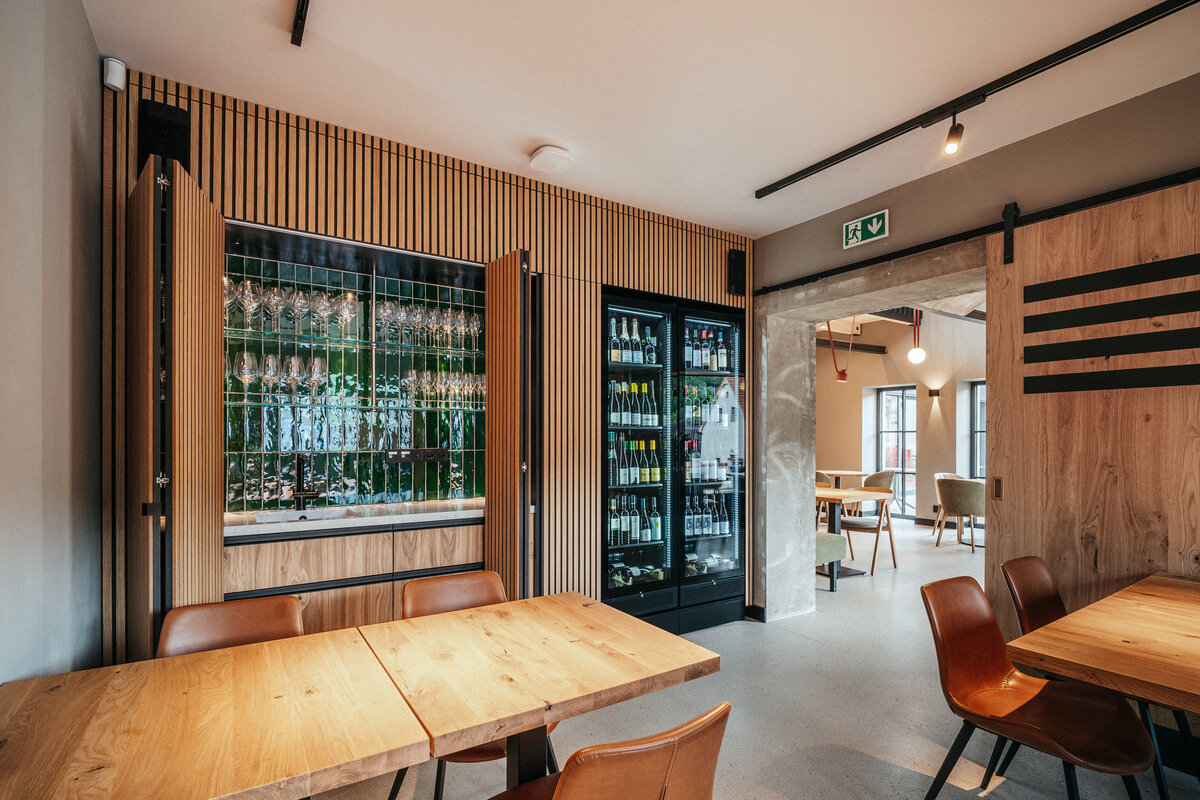| Author |
Ing.arch. Šimon Brnada |
| Studio |
ph6 atelier |
| Location |
Praha - Hlubočepy |
| Investor |
CHARMAR a.s., Radlická 663/28, Smíchov, 150 00 Praha |
| Supplier |
není uveden |
| Date of completion / approval of the project |
May 2024 |
| Fotograf |
Jan Luxík |
Restaurant SEMMERING – Prague Hlubočepy
Steep limestone rocks illuminated by the setting sun, a honking train emerging between rocky cliffs, herds of sheep grazing on green plains untouched by civilization…this is the scenery offered by the view from the restaurant SEMMERING in Prague Hlubočepy. This picturesque place was created by revitalizing two dilapidated buildings of the courtyard tract and completing them.
The design is based on the principle of addition – connecting these existing buildings from the south with a new rectangular modern mass. A composition of masses in the shape of a U will be created, which in the middle creates a small courtyard, a garden, opening towards the Hlubočep Rocks.
The new volume with a “tower” accent connected by glass necks is clad with sheet metal in contrast to the existing buildings and has generous glazing, with sliding doors, behind which is an open kitchen and bar. The layout of the materials is then prescribed in the layout of the operation. The new building houses the technological units. In the side wings there are 4 intimate, variously separable spaces with seating for about 60 guests, including a lounge with a wine cellar. The entrance to the restaurant is through the garden via a newly created steel staircase pierced in the retaining wall of the park and leading to the local square.
The interior concept is based on the contrast of the new gray floor made of polished concrete with warm solid oak. The heart of the space - the long line of the bar and the kitchen counter are highlighted by cladding in a distinctive green corrugated sheet metal and complemented by a sophisticated detail of white artificial stone on the bar top.
In the left wing, the former laundry room, we demolished part of the vaults of the ground floor and opened the space to the attic, where such a small space of the sloping roof opens up and does not seem cramped. While demolishing part of the vaults, we discovered railway rails in the supporting structure instead of I-profiles, which were probably at hand in 1870-1872 during the construction of the railway line in the neighborhood - Prague's Semmering - see photo with date.
The gables of the existing buildings were opened with large openings onto the Hlubočep rocks and comfortable seating with a view was created. The openings are framed and highlighted, on the inside with wooden and on the outside with corten edging.
Green building
Environmental certification
| Type and level of certificate |
-
|
Water management
| Is rainwater used for irrigation? |
|
| Is rainwater used for other purposes, e.g. toilet flushing ? |
|
| Does the building have a green roof / facade ? |
|
| Is reclaimed waste water used, e.g. from showers and sinks ? |
|
The quality of the indoor environment
| Is clean air supply automated ? |
|
| Is comfortable temperature during summer and winter automated? |
|
| Is natural lighting guaranteed in all living areas? |
|
| Is artificial lighting automated? |
|
| Is acoustic comfort, specifically reverberation time, guaranteed? |
|
| Does the layout solution include zoning and ergonomics elements? |
|
Principles of circular economics
| Does the project use recycled materials? |
|
| Does the project use recyclable materials? |
|
| Are materials with a documented Environmental Product Declaration (EPD) promoted in the project? |
|
| Are other sustainability certifications used for materials and elements? |
|
Energy efficiency
| Energy performance class of the building according to the Energy Performance Certificate of the building |
D
|
| Is efficient energy management (measurement and regular analysis of consumption data) considered? |
|
| Are renewable sources of energy used, e.g. solar system, photovoltaics? |
|
Interconnection with surroundings
| Does the project enable the easy use of public transport? |
|
| Does the project support the use of alternative modes of transport, e.g cycling, walking etc. ? |
|
| Is there access to recreational natural areas, e.g. parks, in the immediate vicinity of the building? |
|
